Aeropuerto Internacional de Gimpo (김포국제공항)
9.7Km 2021-04-12
Nambusunhwan-ro 9-gil 13-12, Gangseo-gu, Seúl.
Situado en el distrito Gangseo-gu de Seúl, el Aeropuerto Internacional de Gimpo fue desde 1939 una pista de despegue y aterrizaje del ejército japonés. Después fue utilizada por la Fuerza Aérea de EE.UU. y desde 1954 también lo hizo el Ejército de la República de Corea. En el año 1958, fue bautizado como Aeropuerto Internacional de Gimpo por orden presidencial. En 1971, comenzó a tener el aspecto formal de un aeropuerto. Y actualmente, además de cumplir sus funciones en el transporte aéreo, está funcionando como centro multicultural ideal para realizar diferentes actividades deportivas y comerciales.
Fatum (파툼)
9.7Km 2019-12-20
86-5, Samcheong-ro, Jongno-gu, Seoul
+82-2-739-9888
FATUM is famous for its great view of Samcheong-dong. Each floor is decorated with a different theme, from natural rocks on the first floor, comfort on the second floor, and indoor viewing places on the third and fourth floors, and outdoor seats on the fifth floor. The view features beautiful scenery including Bugaksan Mountain, Inwangsan Mountain, and Gyeongbokgung Palace at once, as well as a fantastic sunset from the café.
Cheongsujeong (청수정)
9.7Km 2021-03-29
91, Samcheong-ro, Jongno-gu, Seoul
+82-2-738-8288
Only fresh ingredients are carefully selected to serve only dishes rich in taste and nutrition. This Korean dishes restaurant is located in Jongno-gu, Seoul. The representative menu is bulgogi with rice.
Centro Cultural de Bukchon (북촌문화센터)
9.7Km 2023-01-03
Gyedong-gil 37, Jongno-gu, Seúl.
Ocho Vistas Panorámicas de Bukchon (북촌 8경)
9.7Km 2021-07-29
Gyedong-gil 37, Jongno-gu, Seúl
+82-2-2148-4161
Bukchon, traducido literalmente como "Aldea del Norte", se refiere al vecindario ubicado al norte del arroyo Cheonggyecheon y el área de Jongno. La zona al sur de Jongno, que hoy en día es Namsan, fue llamada como Namchon, que significa "Aldea del Sur". La Aldea de Bukchon fue habitada principalmente por familiares de familias reales y poderosas autoridades, mientras que la Aldea de Namchon fue utilizada por funcionarios del gobierno de clase media durante el período Joseon. Ahora conocida como Aldea Tradicional de Bukchon, el vecindario se ha convertido en una de las atracciones turísticas más representativas de Corea, que ofrece la oportunidad de tomar varias fotografías memorables. Los visitantes pueden disfrutar de las perspectivas de Seúl junto con los edificios tradicionales hanok siguiendo el recorrido de las Ocho Vistas Panorámicas de Bukchon.
[Ocho Vistas Panorámicas de Bukchon]
Vista panorámica 1 - Vista del palacio de Changdeokgung sobre el muro de piedra
Vista panorámica 2 - Vista del Camino de las Artesanías de Wonseo-dong
Vista panorámica 3 - Vista de casas hanok en el área de 11-beonji de Gahoe-dong
Vista panorámica 4 - Vista de Gahoe-dong 31-beonji desde la cima de la colina
Vista panorámica 5 - Vista del callejón Gahoe-dong (cuesta abajo)
Vista panorámica 6 - Vista del callejón Gahoe-dong (cuesta arriba)
Vista panorámica 7 - Vista del callejón Gahoe-dong 31-beonji
Vista panorámica 8 - Vista desde la escalera de piedra de Samcheong-dong
Seoul Wave Art Center (서울웨이브아트센터)
9.7Km 2024-08-06
Jamwon-ro 145-35, Seocho-gu, Seúl
Moonguesthouse [Korea Quality] / 문게스트하우스 [한국관광 품질인증]
9.7Km 2020-09-09
31-18, Samil-daero 32-gil, Jongno-gu, Seoul
+82-2-745-8008, +82-10-8704-9981
The Moon Guesthouse is situated near a number of interesting tourist destinations including Unhyeongung Palace (3min on foot), Bukchon Hanok Village (5min on foot), Changdeokgung Palace (5min on foot), and Changgyeonggung Palace (10min on foot). The guesthouse was named ‘moon’ (‘door’ in English) because it has many 176 doors and windows. Upon entering by the gate, visitors will see a ‘ㄷ’-shaped hanok building in the courtyard, in which a wooden bedstead and a table are placed. On the opposite of the hanok building there is a wall roofed with tiles engraved with Korean patterns such as deer, pine, turtle, etc. Flowers in the flowerbed lined up along the wall are in bloom and the bonsai are also well-kept in the house. Renovated and opened as a guesthouse in September 2011, Moon Guesthouse consists of a bonchae (main building) and a byeolchae (detached house). The rooms are decorated with red clay and hanji (traditional Korean paper handmade from mulberry trees), and have under-the-floor heating (ondol). Each room is equipped with an air-conditioner, and has a 40cm-thick layer of red clay over the ceiling for insulation, making the rooms cool in summer and warm in winter. The house has seven individual guestrooms and five modern bathrooms, but the entire building (bonchae or byeolchae) can be rented, too. In particular, the unhyeondang of the bonchae is very popular as it can be converted into one large space for special events, group workshops, etc. simply by opening all the sliding doors (Bunhapmun – Goryeo construction style). This room, which is decorated with a flower-patterned windscreen, a landscape painting, and calligraphy, has been used as a shooting location for various TV programs including KBS2’s TV reality program Man’s Qualification and its variety show The Human Condition. The guestrooms are also equipped with traditional furniture including a cabinet inlaid with mother-of-pearl. The guesthouse also provides a variety of experience programs from 11am to 3pm, including tea ceremony, wearing Hanbok (traditional Korean clothes), making kimchi and gochujang (red chili paste), playing a traditional musical instrument, making a rubbing of a stone inscription, calligraphy, drawing orchids on a fan, and so on. The house has about seventy hanbok and other clothing accessories, as well as a royal costume. Its calligraphy and drawing orchid programs are run directly by the owner, who used to work as a classical Chinese teacher at a high school.
Best Western Premier Hotel Kukdo (베스트웨스턴 프리미어 호텔국도)
9.8Km 2020-04-04
164, Eulji-ro, Jung-gu, Seoul
+82-2-6466-1234
The Best Western Premier Kukdo (opened on March 1, 2007) was the first Best Western in Korea. Since then, the Best Western chain has expanded to include 15 different facilities (a total of 1,900 guestrooms) located all around the country.
Best Western Premier Kukdo offers subsidiary facilities such as a fusion restaurant, sky lounge, fitness center, and business center. Each of the 295 guestrooms has a bidet and high speed internet. Double rooms have a shower booth, while twin rooms have a bathtub.
From the sky lounge (21F) guests can get a great view of Bukhansan Mountain, Cheongwadae, Dongdaemun shopping center, and Myeongdong, not to mention a bird’s-eye view of Seoul nightscape. The hotel also offers VIP rooms that can accommodate up to 20 people and a number of other conveniences that makes this an ideal choice for those traveling for business. Myeongdong and Dongdaemun are only a 10-20 minutes away on foot.
Parque Ecológico de Humedales de Gangseo (강서습지생태공원)
9.8Km 2021-02-04
Yangcheon-ro 27-gil 279-23, Gangseo-gu, Seúl
El Parque Ecológico de Humedales Gangseo está localizado en la zona sur del río Hangang, entre los puentes Bangwha y Hangju. Establecido en julio de 2007, el parque consta de humedales, lagos de agua dulce y varias plantas acuáticas. Los eco-senderos serpentean a través de las áreas llenas de juncos y sauces, y llega hasta más allá del observatorio de las aves migratorias. En el parque, los visitantes pueden ver y aprender sobre la migración de las aves durante el verano y el invierno, o unirse a los programas eco-educativos que se organizan.
Aldea Tradicional de Bukchon (북촌한옥마을)
9.8Km 2024-05-17
Gyedong-gil 37, Jongno-gu, Seúl
Bukchon era la aldea de la clase noble en la antigüedad. Todas las casas tradicionales de la clase alta siguen preservándose hasta el momento, conservando sus estilos arquitectónicos. Solo había unas treinta casas en la antigüedad, pero la zona se desarrolló tras la Guerra de Corea. La Aldea Tradicional de Bukchon es una zona de viviendas tradicionales, que ha compartido los 600 años de historia con los palacios que se encuentran en sus cercanías, como Gyeongbokgung y Changdeokgung, y el Santuario de la Realeza Jongmyo. Las calles del barrio son estrechas y curvadas como ramas de árboles, lo cual demuestra el paisaje urbano, típico del lugar. Hoy en día, estos lugares transmiten indirectamente un ambiente de la época de Joseon, mediante restaurantes de comida coreana, centros culturales, etc. El nombre de la aldea “Bukchon” (buk en coreano significa "norte") fue acuñado por estar ubicado al norte del arroyo Cheonggyecheon y de Jongno. Está formada por las calles Wonseo-dong, Jae-dong, Gye-dong, Gahoe-dong e Insa-dong, y en tiempos antiguos residían allí los altos funcionarios o los miembros de la realeza.
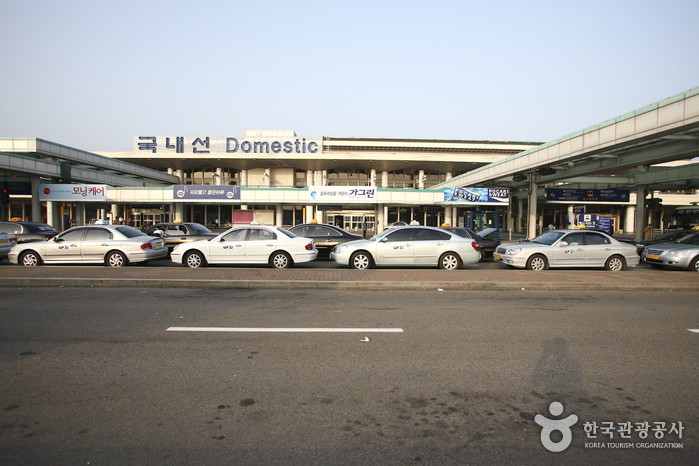
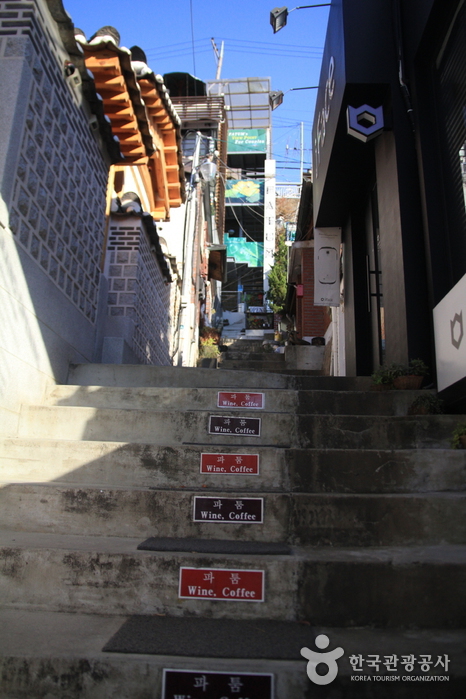
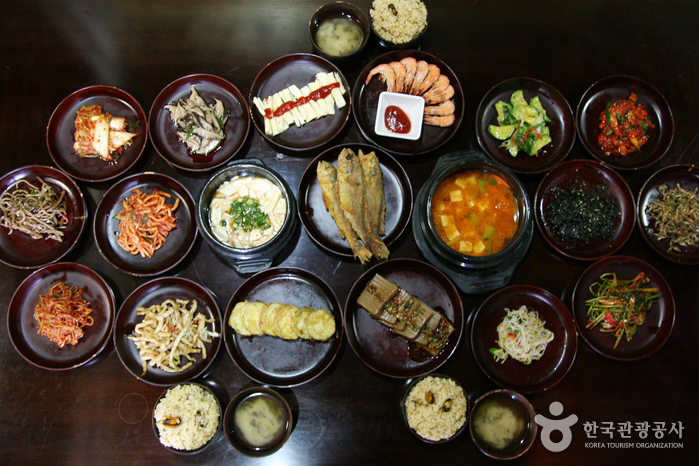
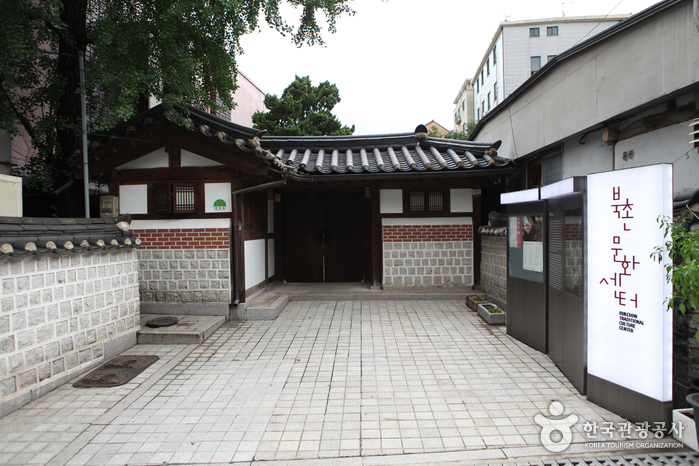
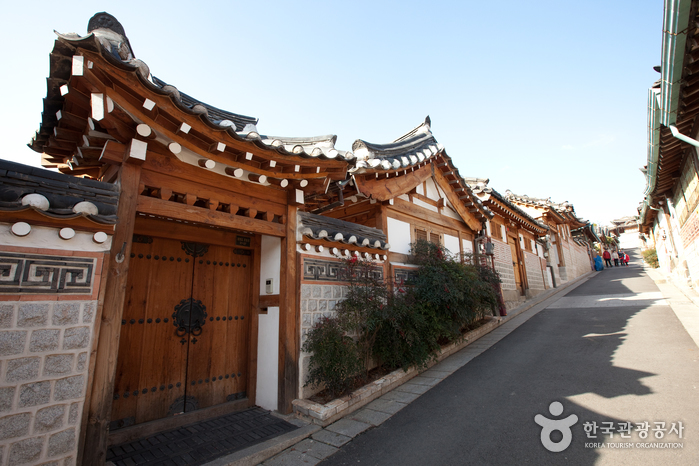

![Moonguesthouse [Korea Quality] / 문게스트하우스 [한국관광 품질인증]](http://tong.visitkorea.or.kr/cms/resource/09/2577509_image2_1.jpg)
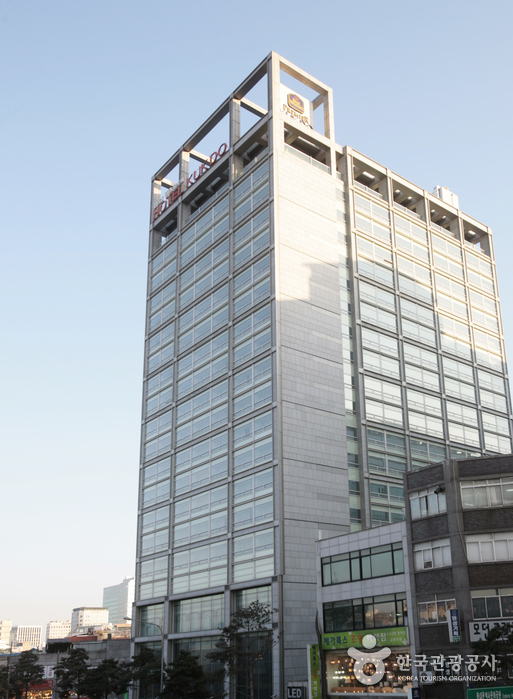
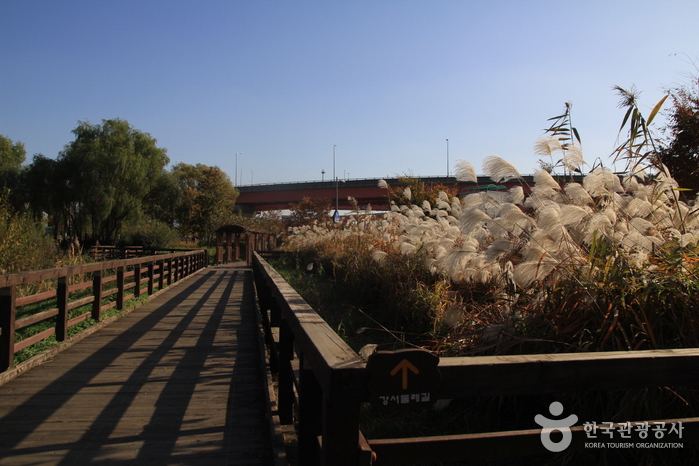
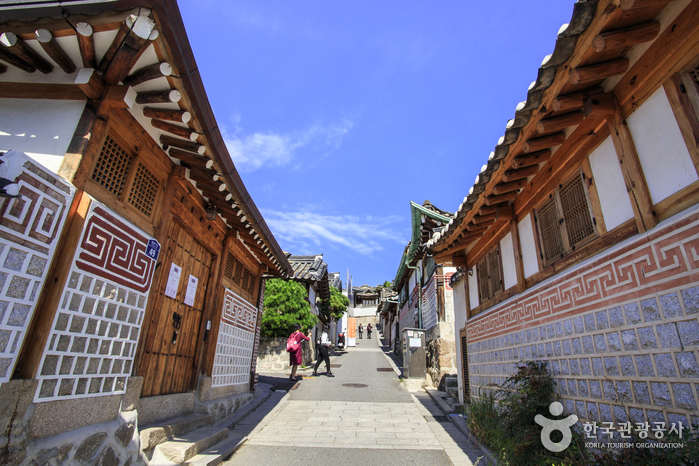
 Español
Español
 한국어
한국어 English
English 日本語
日本語 中文(简体)
中文(简体) Deutsch
Deutsch Français
Français Русский
Русский